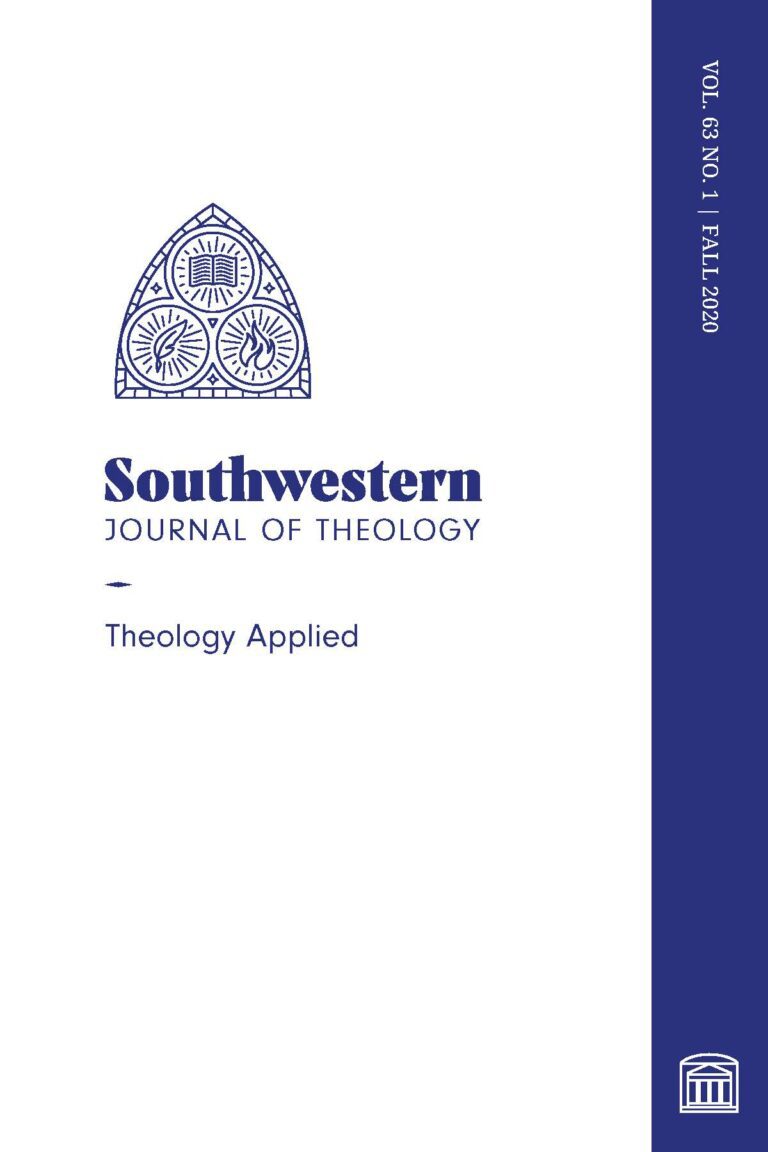
Theology Applied
Southwestern Journal of Theology
Volume 63, No. 1 – Fall 2020
Editor: David S. Dockery
By Robin Hadaway. Nashville: B&H, 2020, 352pp., $29.99
Robin Hadaway’s survey of world missions issues a fresh study on the range of ideas in missiology. He argues for renewed attention to the subject because while “all evangelical Christians understand the world desperately needs Christ and the task of proclaiming the gospel is great,” agreement on approaching the missionary task is markedly different among Christ-followers (p. 16). The author enters the genre with fresh perspectives on mission philosophies, strategies, and methods. Hadaway, missionary scholar and practitioner, engages the reader with both densities of research and examples from his own missionary experiences. Drawing from his Baptist context, readers interested in the various nuances of missions among the Southern Baptist denomination will find a concentrated sampling of missiological insights from its primary international sending support structure, the International Mission Board. As suggested in the title, Hadaway surveys the missiological research and application around broader categories “not to limit one’s thinking, but to help the missiologist and practitioner process where they fit along the mission spectrum” (p. 16). The author builds his study on biblical premises and leads the reader to consider the various missiological studies addressed both historically and in contemporary perspective (p. 17).
After an introduction highlighting the present realities in missiological studies, Hadaway leads the reader through the biblical, theological, and historical foundations in evangelical missions. Setting the Bible as the “foundation and basis for missions” (p. 17), the author sets missions within the Genesis to Revelation storyline of Scripture consisting “of the activities of God and his representative to bring Adam’s race back into fellowship with him through his Son, Jesus Christ” (p. 18). Hadaway’s treatment of the biblical-theological framework for missions or specific texts is broad but not deep as he surveys the foundational landscape of the field. The theological foundation for missions focuses primarily on soteriology and its relationship to evangelism as well as the role of the church in carrying out the missionary task. Hadaway devotes space to surveying the various views on salvation, including everything from pluralism to Calvinism. The author further argues that the responsibility of proclaiming the gospel in mission lies within every church (p. 50). The historical foundation of Hadaway’s survey includes major epochs of mission history as well as unique biographical sketches of some who shaped the philosophies and methodologies of missions today.
In chapters five through seven, the author offers an array of contexts for missions. Hadaway’s overview of world religions defines major (and minor) world religions with the focus on the need for contextualizing the gospel to communicate effectively in the various worldviews around the world. Although contextualizing is a focus and encouragement to the reader, the author concludes by asserting, “At the end of the day, each person from other faiths must be asked to turn from that belief system and follow Christ” (p. 131). Thus, his sections on worldview and contextualization (chapters six and seven) delve deeper into an analysis of what that entails. Hadaway’s survey of contextual approaches in gospel proclamation specifies current realities in seeking to address the need for further studies. The author writes, “Currently, contextualization is probably the most important, yet controversial concept in missions … and challenges the missionary to his core” (p. 189). This sentiment builds his case for understanding mission philosophies, strategies, and methods.
Hadaway’s survey of the various philosophies, strategies, and methods guides the reader in considering how one should think about the approach to mission, specifically how the missionary evangelizes toward church planting. Helpful to this section are unique strategies implemented currently on the mission field. Although the author does not offer critiques of the various approaches, he postulates enough information to inform the reader of current mission praxis. Hadaway’s final two chapters briefly examine the role of the mission agency in the life of a missionary as well as the author’s perspective on missions in the twenty-first century.
The author does not shy from illuminating the reader to a wide range of beliefs and approaches to mission that deserves further study. Therefore, educators, students, church leaders, and missionary practitioners will appreciate the array of issues and ideas that offers context in grappling with the church’s role in the mission of God. Furthermore, the author’s experience on the mission field and familiarity with leadership in mission agencies bolsters his sections on mission strategy and method, having tried or viewed first-hand their strengths, weaknesses, and need for inclusion of further study.
Since this is a survey, the challenge for the reader is the lack of clarity on the author’s missiological positions. The basis of analysis lends more toward a researched overview of topics and not a formal stance on missiological principles. Hadaway is clear on the biblical basis for mission and his articulation of the gospel. However, on the topics presented, readers will find minimal subjective assertions throughout the book.
In sum, A Survey of World Missions is a gift to the church and academia in helping think through the essential categories for evangelical missions, especially as it updates the field of study with fresh missiological considerations. Although all evangelical Christians will benefit from thinking through this survey, the book will enlighten and inspire those who claim Southern Baptist roots. Classrooms will want to utilize this resource as a springboard for thinking more deeply about the church on mission. Hadaway’s final words offer great encouragement in recognizing that “although Christian missions may seem to the observer as haphazardly planned, . . God takes the long view and sees a greater purpose for the ages” (p. 288). Hadaway writes with God’s perspective in view, and for that reason, this book will serve the church and her mission well.





